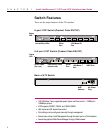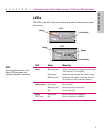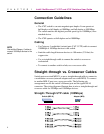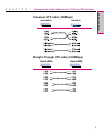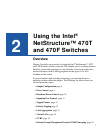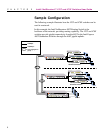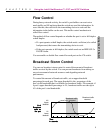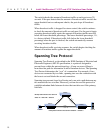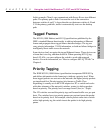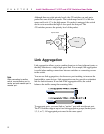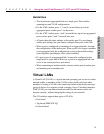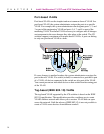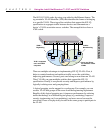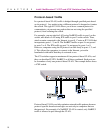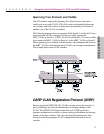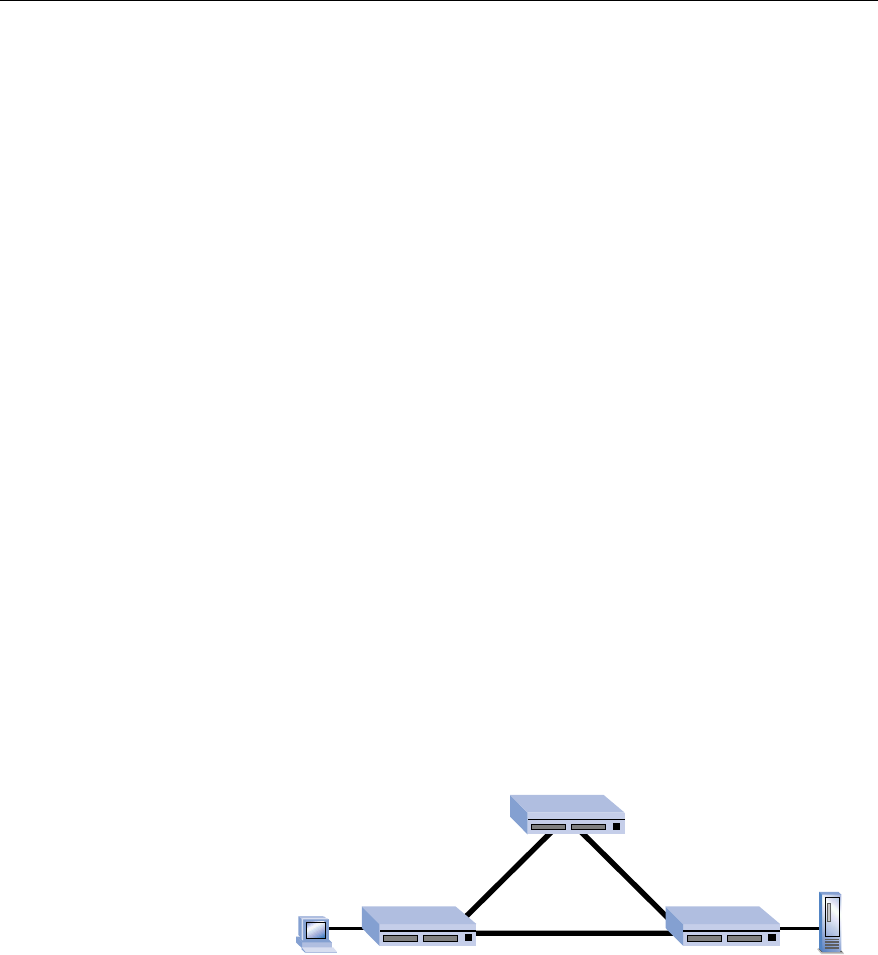
10
CHAPTER 2
Intel
®
NetStructure™ 470T and 470F Switches User Guide
Primary Path from Client A to Server B: Switch A –> Switch C
The switch checks the amount of broadcast traffic on each port every 20
seconds. If the port detects that the amount of broadcast traffic exceeds the
upper threshold on two subsequent checks, the port drops all broadcast
traffic.
When broadcast traffic is dropped for storm control, the switch continues
to check the amount of broadcast traffic on each port. For the port to begin
accepting broadcast traffic again, the amount of broadcast traffic must fall
below the lower threshold percentage. The lower threshold percentage, 1%,
is a factory default. If broadcast traffic falls below the lower threshold
percentage when the port is checked, the switch automatically resumes
servicing broadcast traffic.
When broadcast traffic servicing resumes, the switch begins checking the
amount of broadcast traffic against the upper threshold.
Spanning Tree Protocol
Spanning Tree Protocol, as described in the IEEE (Institute of Electrical and
Electronic Engineers) 802.1D specification, is a protocol designed to
prevent loops within the network topology. A loop can occur if there is
more than one path for information to travel between devices. The Spanning
Tree Protocol determines the “cost” of a connection. For example, if two
devices are connected by two links, spanning tree uses the connection with
the lowest cost and blocks the second connection.
Spanning tree prevents loops by allowing only one active path between any
two network devices at a time. However, you can also use this protocol to
establish redundant links between devices that can take over if the primary
link fails.
P
a
th
: 3
C
o
s
t: 1
0
0
P
a
th
: 2
C
o
s
t: 2
0
0
Path: 1
Cost: 100
Switch A
Switch C
Server BPC Client A
Switch B
Backup Path from Client A to Server B:
Switch A –> Switch B –> Switch C



